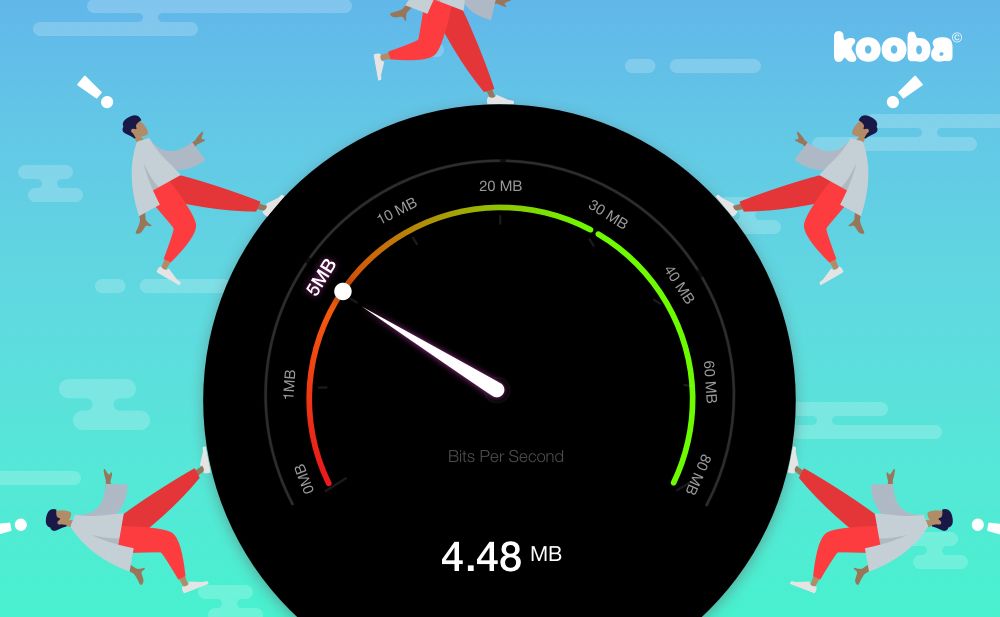What makes a great website? Design? User experience? Compelling content? As the person in the street or the average client at the workshop phase and you’ll hear all those answers.
And all those things matter. But without one specific attribute, your site is going to struggle: speed. How fast your site loads, and how fast it loads on the full range of devices and networks that characterise the modern world, is absolutely central to your success.
The statistics are well known and well understood. This report from Google, for example, makes it clear just how significant speed (or the lack of it) can be for any website. I could highlight almost any statistic from that report but how about this:
As page load time increases from 1 second to 5 seconds, the probability of bounce increases 90%, or effectively doubles.
We’ve discussed bounce rate previously on this blog, and specifically noted how that as bounce increases it negatively impacts on every single other metric you care about. Simply put, people aren’t particularly keen on waiting around for homepages to load, And as the percentage of people who remain on your site decreases, so does conversion, engagement, revenue, inbound leads - anything you care to name.
And for an agency very much committed to ‘commercial digital design’, that’s a huge problem. For that reason, we take speed very seriously indeed. In the rest of this short piece I want to talk about how we optimise our sites for speed and say a few words about measurement. Hopefully you find it helpful.
Designing fast websites
Books can (and have) been written on this subject, and the design and coding of websites is a fast-changing field. Nevertheless, within the constraints of a blog post it’s still possible to bring out the major principles and approaches that lead to fast sites (and thus commercially successful sites).
Following these rules and you’ll be firmly on the right track.
Own your code
Ultimately the speed of a site is a function of how efficiently and thoughtfully it has been coded. And given that is the case, you need to ‘own’ that code and that process. That means relying as little as possible on off-the-shelf platforms, frameworks and web design packages - many of which are characterised by bloated and clunky code - and instead building your site bespoke to your own requirements. Only by doing so will you have full control over exactly what goes in and how it impacts on performance. It’s also best practice in web development anyway.
Start with speed
Too many sites are built first and then ‘optimised’ before launch. Even worse, they are built, launched and then optimised after launch when the consequences of poor performance become apparent. Unfortunately, by that stage it is too late to make any serious impact.
Instead build from the ground up with speed as a central criterion in every decision you make. Practice ‘progressive enhancement’ and first design the simplest conceivable experience before adding sophistication as the client-side browser allows it (in a sense this is analogous to the ‘mobile-first’ approach we discussed on this blog last week).
Centring performance in decision-making can be tough. It involves hard decisions and means client and agency need to be on the same page. But it delivers fast sites that perform commercially as a result.
Minimise images, animations and video
Nobody wants to remove all images and video from your site. But do ask whether any given image or animation is truly necessary - particularly on mobile and other non desktop devices. The top of a homepage is one thing but in the ‘core’ site experience don’t let large numbers of huge images slow things down.
Similarly whilst video can deliver a huge impact, be aware of the potential impact on load times and work as hard as possible to compress files and loop short video (as we did in a recent project for Showcase Ireland) in order to reduce that impact. If necessary, ensure there is a static image as a fallback in cases where video takes too long to load (or doesn’t load at all).
Be mindful around third party scripts and services
Whilst many businesses have a completely reasonable and understandable requirement for third party scripts to be integrated into websites (think display advertising platforms re-targeting individuals based on activity on site, for example), each one of these added to a side reduces performance and introduces a slight additional risk of something going catastrophically wrong (because by definition you have introduced reliance on a third party).
As with images and video, this isn’t a question of removing these services - for most of our clients that isn’t an option. We do recommend that a regular audit is undertaken and any that are not being used are removed, otherwise they do tend to accumulate like barnacles on a boat, with a similar impact on performance. Even better, think twice before adding them in the first place.
If it really matters, consider a landing page
Where conversion is everything, don’t be afraid to remove the need to please all audiences from the equation and build a landing page optimised for speed, conversion and very little else.
Landing pages can be quick to make, load like lighting on almost any device, and can be a creative way to resolve any tension between speed and conversion on one hand, and deep, rich user experience on the other.
Choose the right host (and the right hosting package)
If speed is important to you, take time to choose the right host and the service level that will deliver. Ultimately you get what you pay for: a simple shared server is not going to perform as well as a full scale Content Delivery Network (CDN) or dedicated server.
At Kooba we spend a lot of time looking at the hosting market from every angle: it is an incredibly important decision for any client. Of course there are a number of criteria in play, including how effectively the service can scale, reliability and perhaps most importantly responsiveness and support when something goes wrong. But speed is also a factor - don’t ignore it.
Measuring speed
Finally a short note on measuring speed. Although file sizes (to give one example) are objective facts, to some extent ‘speed’ is a subjective measure dependent on a number of variables. Just to prove that point, I can run kooba.ie through https://www.webpagetest.org and each of the three tests will return a different load time.
So be careful taking the results of online tests as anything other than indicative (although they are extremely helpful on that basis). Nothing beats experience and testing in the field to establish how fast a site is and indeed how fast it feels (not precisely the same thing).
Lastly, be careful about the automated ‘recommendations’ delivered by some sites (including Google). These can be useful for sure, but following them blind will deliver an online experience optimised for speed and speed alone. As always, there is a balancing act here. Feel free to reject recommendations, but so so from a position of authority and understanding.
In the meantime, good luck speeding things up!








